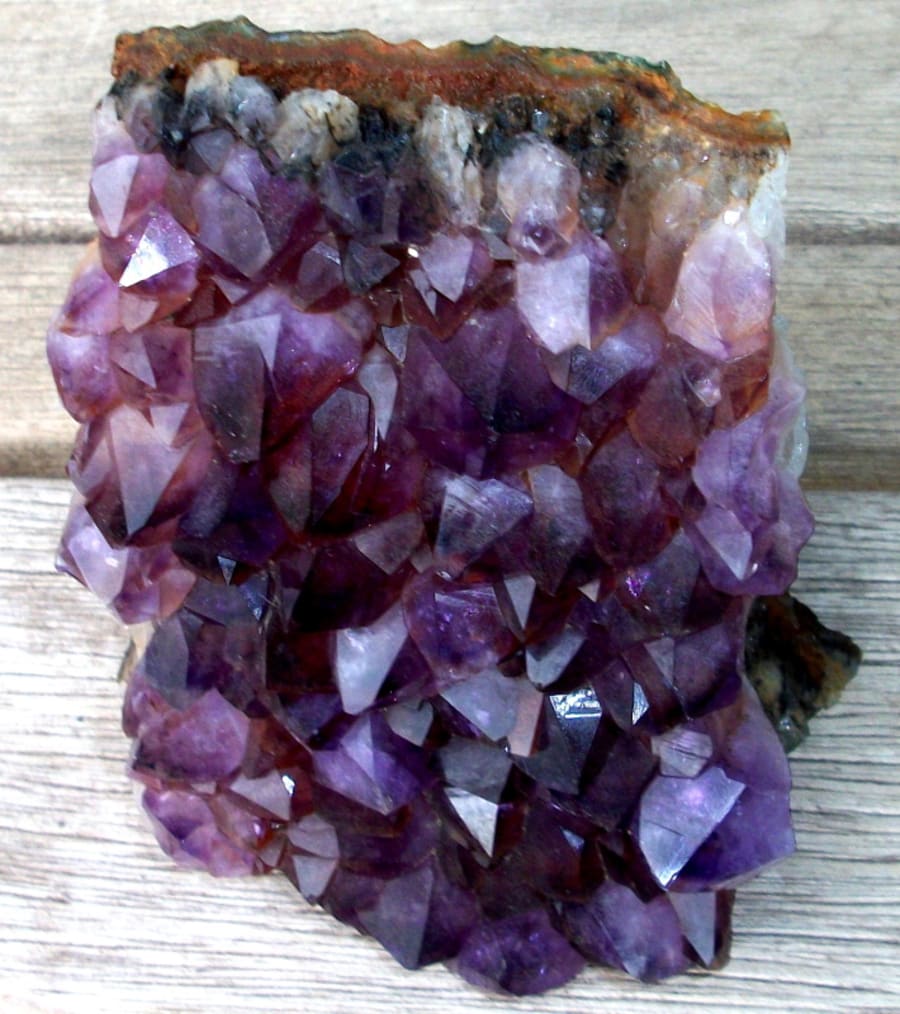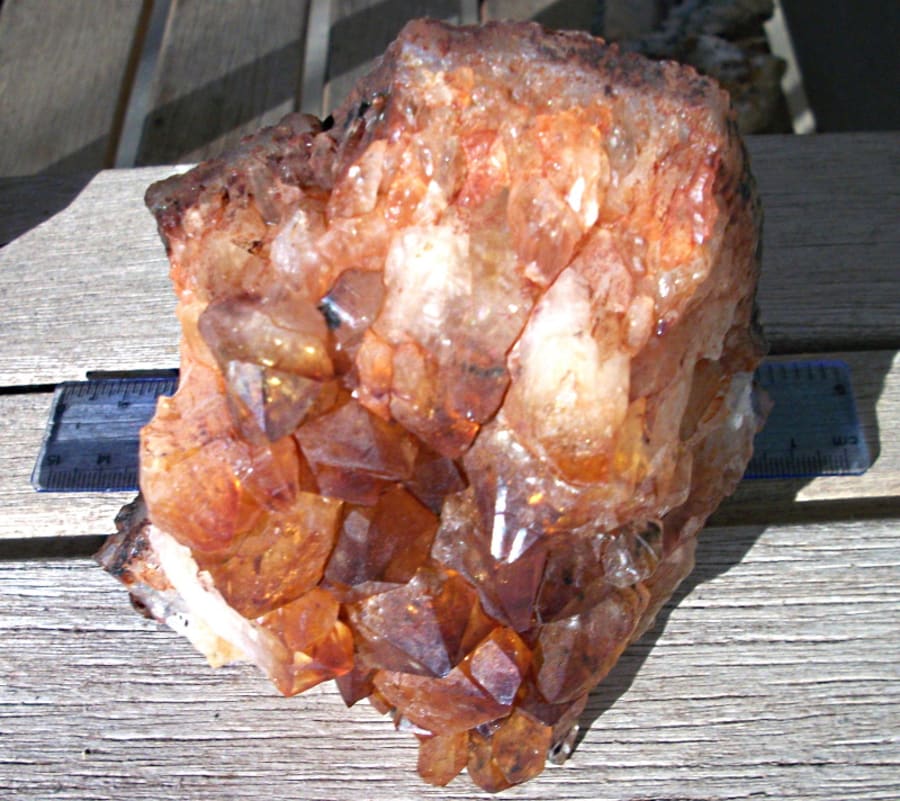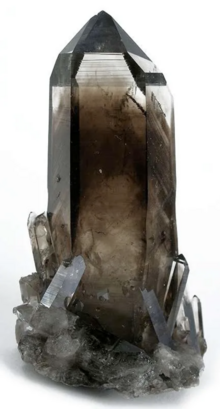Amethyst, Citrine, and Smoky Quartz
Jan 1, 2021 14:52:28 GMT -5
RWA3006, RickB, and 5 more like this
Post by 1dave on Jan 1, 2021 14:52:28 GMT -5

Amethyst - Name:From Greek "a-methystos", meaning not drunk.
A variety of Quartz
A violet to purple variety of quartz that owes its color to gamma irradiation (Berthelot, 1906) and the presence of traces of iron built into its crystal lattice (Holden, 1925). The irradiation causes the iron Fe(+3) atoms that replace Si in the lattice to lose an electron and form a [FeO4]0 color center (Lehmann and Moore, 1966).
Uranium is about 2 parts per Million of the earth's crust.
How long does it take to make the color change?
On heating the amethyst converts to Citrine or Smoky Quartz.

Citrine - A yellow to yellow-orange or yellow-green variety of quartz.
Quartz colored by inclusions, or coatings, of any kind is not called citrine. Iron-stained quartz should not be mistaken for citrine.
The cause of the color is still under debate. At least some citrine is colored by aluminum-based and irradiation-induced color centers related to those found in smoky quartz (Lehmann, 1972; Maschmeyer et al., 1980). Accordingly, transitions to smoky quartz ("smoky citrine") exist, many citrines show smoky phantoms. Like smoky quartz, these types of citrines pale when heated above 200-500°C and turn yellow again when irradiated (Lehmann, 1970). There appear to be at least two types of yellow Al-based color centers with different thermal stability (Schmetzer, 1988). Since the yellow color centers are often more stable than the smoky color centers, some smoky quartz can be turned into citrine by careful heating (Nassau and Prescott, 1977). Natural citrine, as well as citrine produced by heating smoky quartz, is dichroic in polarized light.
It has also been suggested that iron is the cause of color, as artificial crystals grown in an iron-bearing solution turn out yellow. However, the dichroic behavior of the lab-grown crystals differs from that in natural citrine (Rossmann, 1994).

Smoky Quartz - A smoky-gray, brown to black variety of quartz that owes its color to gamma irradiation and the presence of traces of aluminum built into its crystal lattice (Griffiths et al, 1954; O'Brien, 1955). The irradiation causes the aluminum Al(+3) atoms that replace Si(+4) in the lattice in a [AlO4]- group to transfer an electron to a neighboring monovalent cation (often Li+) and form a [AlO4/Metal0]0 color center (O'Brien, 1955).
The name Morion is used for black smoky quartz.
A look at my Cathedral Agate:

A closer look:

Dark, light repeated 5 times, Citrine, then finally amethyst. icon_think
Q: Are the dark layers an indication of a long time passage before the next fill sequence?














